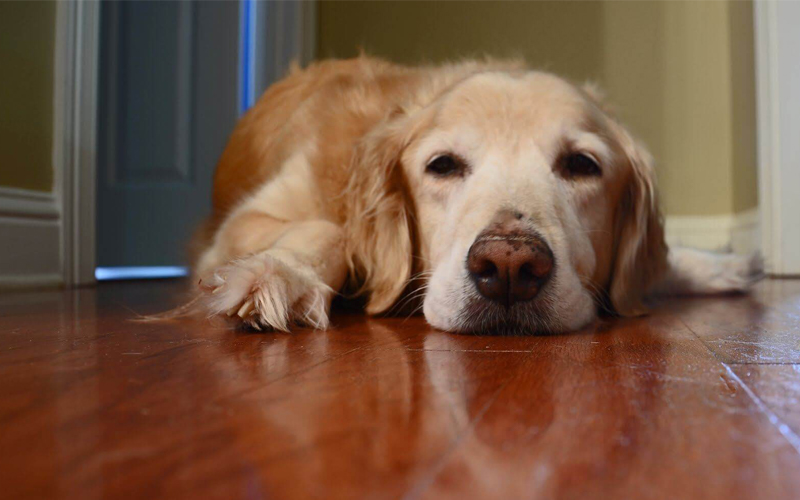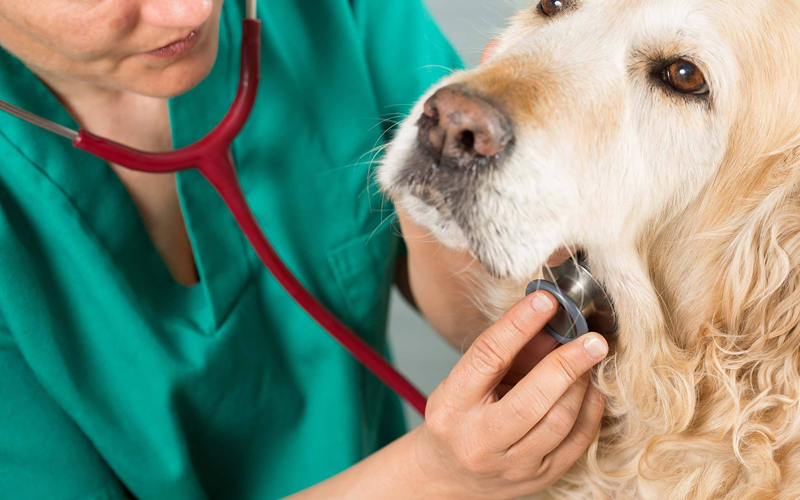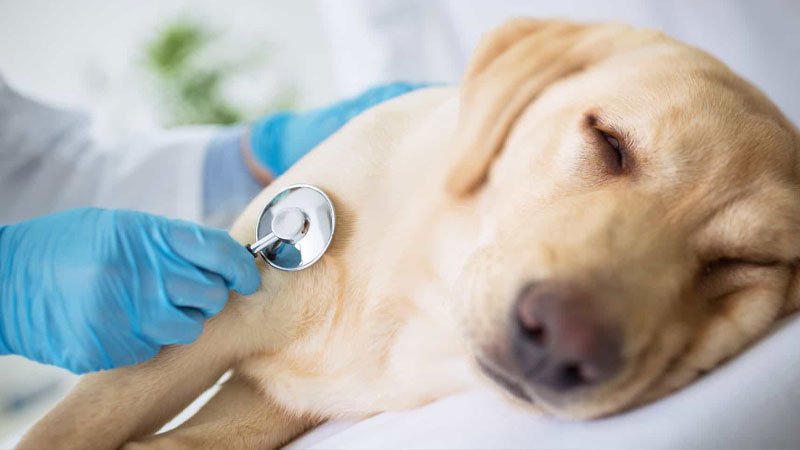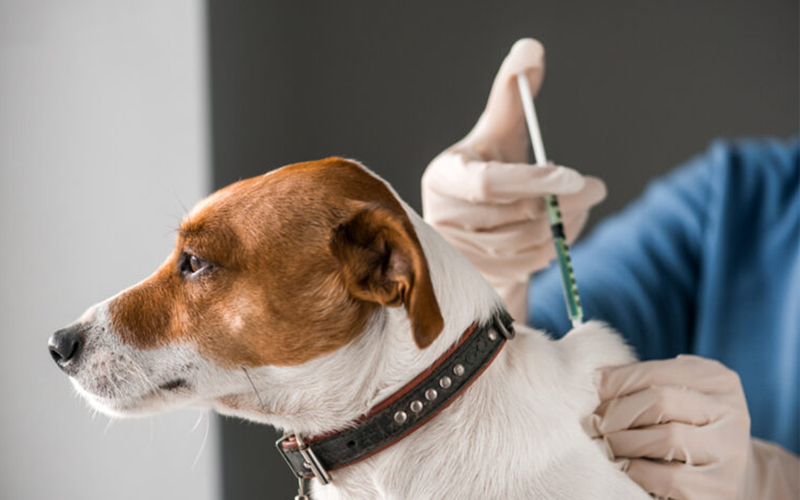It’s not uncommon for dogs to get sick, and sometimes they may even vomit or lose their appetite. But what if your dog suddenly becomes lethargic, stops eating, and starts vomiting white or yellow foam? This could be a sign of a more serious issue that requires immediate attention.
This article will provide you with information on the possible causes, symptoms, and solutions to this problem, so you can keep your furry friend healthy and full of energy!
1. Why is my dog lethargic, not eating, and vomiting?
If your furry friend suddenly becomes lethargic, stops eating, and starts vomiting white or yellow foam, it could be due to a foreign object obstructing its digestion, or it may have an illness. The treatment will depend on the specific cause and can vary from case to case.
Eye Infection
Sometimes, your dog’s loss of appetite and lethargy could be due to an eye infection. This may be caused by hot weather, resulting in lethargy and reduced activity. It could also be due to an injury to the eye, causing pain and a discharge of pus or tears.
Additionally, a viral or bacterial intestinal infection could lead to fever and eye discharge, accompanied by a loss of appetite.
 Lethargic dog with eye discharge
Lethargic dog with eye discharge
It’s important to identify the cause of your dog’s eye discharge and loss of appetite. If it’s due to hot weather, move your dog to a cooler location. However, if it’s due to an injury or an infection, it’s best to seek veterinary care immediately.
Intestinal Inflammation
This condition is characterized by prolonged fever and diarrhea, along with vomiting, loss of appetite, and vomiting of yellow or white foam. If left untreated, your pup may become dehydrated and weak, and their chances of survival are slim.
Within 24 hours of the onset of symptoms, refrain from giving your dog any food. Instead, provide them with water or electrolytes. If your dog is extremely weak, you can administer energy-boosting supplements or medications to help them recover.

For milder cases of intestinal inflammation, digestive enzymes and rest may be sufficient. However, if your dog’s condition does not improve or worsens, seek veterinary care immediately.
Care Disease
Care Disease is a condition that develops in stages and causes a decrease in your dog’s overall health and immune system. It puts a lot of pressure on your dog’s body and can be life-threatening.

Signs that your dog may have Care Disease include:
– Runny nose with brown discharge, rapid breathing, and wheezing.
– Vomiting yellow or white foam, diarrhea with sticky and foul-smelling stool. In severe cases, the stool may contain blood.
– Cloudy eyes with pus and ulcers, leading to blindness if left untreated. Your dog may also experience seizures.
If you notice any of these symptoms, seek veterinary care immediately. To prevent Care Disease, make sure your dog is vaccinated from an early age.
Parvo

Parvo is a serious and potentially life-threatening condition. Symptoms include:
– Frequent vomiting and loss of appetite.
– Vomiting of yellow or white foam.
– Lack of energy, lethargy, and depression.
– Diarrhea with unusual-smelling stool.
After the onset of Parvo, your dog may only have a couple of days left. Therefore, it’s crucial to seek veterinary care as soon as possible. There is currently no specific treatment for Parvo, but you can prevent it by ensuring your dog is vaccinated early on.
Foreign Object in the Throat or Stomach

Sharp and pointed bones, such as chicken or fish bones, can get stuck in your dog’s throat or stomach, leading to continuous vomiting as their body tries to expel the object. This can cause serious damage to their digestive and respiratory systems. It’s important to seek veterinary care to remove the foreign object and provide the necessary treatment.
Other Possible Causes
– Environmental Changes: The unpredictable and changing climate can affect your dog’s health. They may struggle to adapt to these changes, leading to vomiting white or yellow foam. Before adopting a dog, consider the breed’s origin and suitability for your local climate and environment.

– Dietary Changes: Sudden changes in your dog’s diet can also lead to vomiting. Gradually introduce new foods and consult a veterinarian for advice on a suitable diet for your dog.
2. How to Treat a Dog That’s Not Eating, Vomiting, and Lying Down
No Food for 24 Hours
If your dog is experiencing vomiting and diarrhea, it’s important to stop feeding them for 24 hours, including their favorite treats and chew toys. Provide them with plenty of water, and after a day, introduce bland food for the next 1-2 days.
A bland diet should consist of two parts carbohydrates (white rice) and one part easily digestible protein (skinless, boneless chicken, boiled meatballs, or low-fat cheese). For a 5-kilogram dog, offer about one cup of food per day, divided into four meals, with a gap of six hours between each meal.
 No food for 24 hours
No food for 24 hours
Limit Physical Activity
When your dog is going through a period of lethargy, vomiting, and loss of appetite, it’s crucial to minimize physical activity and allow them to rest. Avoid taking them out for walks or engaging in any form of exercise.
Monitor and Clean Up After Your Dog
Your sick dog may lose control of their bowel movements, so avoid scolding or punishing them. By observing their urine and stool, you can also gain insights into their health condition.
 Monitor and clean up after your dog
Monitor and clean up after your dog
Keep a Close Eye on Their Symptoms
Pay close attention to your dog’s symptoms to prevent the condition from worsening. Avoid leaving them alone, and if you’re unable to care for them, consider taking them to a veterinary clinic.
3. Important Care Tips for Dogs That Are Not Eating and Are Lethargic
- Ensure your dog takes their medication on time, in the correct dosage, and as prescribed. To make this easier, you can mix the medication with their food or water, or use a syringe to administer it directly into their mouth.
- Maintain good hygiene practices, such as cooking food thoroughly and boiling water. When your dog is sick, offer easily digestible food like porridge.
 Important care tips
Important care tips
- Talk to your dog gently and stroke them to provide comfort. Also, ensure they have a quiet and cool space to rest.
- Avoid bathing your dog or exposing them to water until they fully recover. If necessary, use a warm towel to clean their eyes, nose, ears, skin, and hindquarters. Additionally, promptly clean up after your dog if they vomit or have an accident.
4. Prevention Methods to Avoid Vomiting in Dogs

In summary, here are some key points to remember if your dog is vomiting white or yellow foam:
– Ensure your dog is fully vaccinated when they are young.
– Provide a balanced and appropriate diet to help your dog adapt gradually.
– Avoid feeding your dog sharp and dangerous foods like chicken or fish bones.
If your dog’s condition worsens, seek veterinary care immediately.
We hope this information has been helpful and will assist you in taking the best care of your furry friend.
The Ultimate Fortune: 3 Zodiac Signs to Prosper in the Last Quarter of 2024
As we approach the end of 2024, it’s time to shine a spotlight on the three zodiac signs that are set to experience a burst of good fortune. Blessed by the heavens above and favored by the God of Wealth himself, these lucky individuals will find themselves presented with unparalleled opportunities for financial prosperity and success.
Infant Diarrhea: Symptoms and Strategies for Swift Management
Introducing: A Comprehensive Guide to Infant Diarrhea.
Recognizing the subtle signs of diarrhea in infants is crucial. Beyond the usual suspects of watery stools and vomiting, keep an eye out for less obvious indicators such as dry eyes and reduced urination. Stay tuned as we delve deeper into the world of infant diarrhea, offering insights into the tell-tale signs, recommended actions, and preventive measures to keep your little one happy and healthy.



































